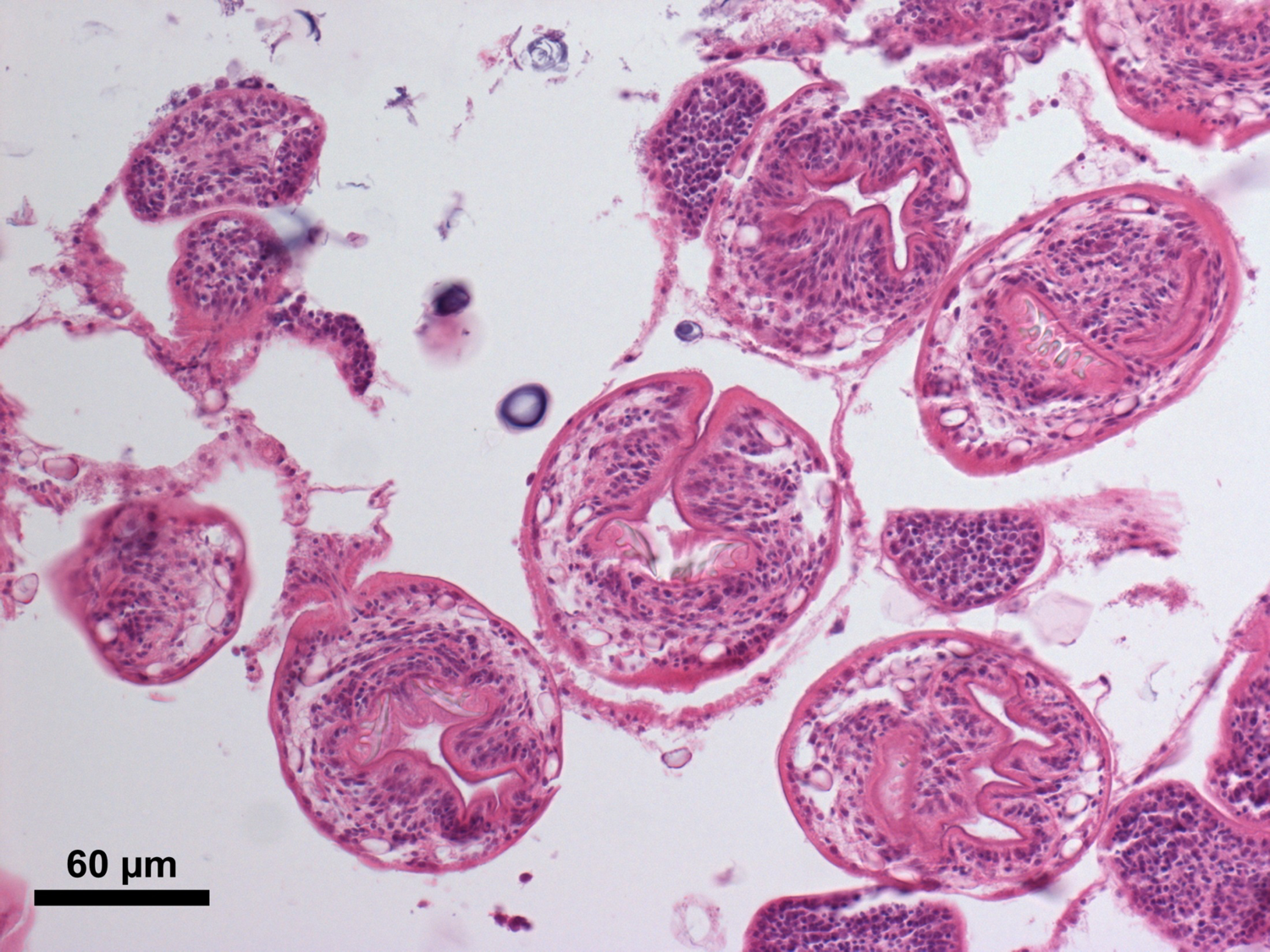A NEW emerging DEADLY parasite poses a threat to canine and human health in Ontario
.png)
Photo credit: Jonathon Kotwa
What is Echinococcus multilocularis?
Echinococcus multilocularis (EM) is a parasitic tapeworm that can cause serious disease in both dogs and humans. Before 2012, EM had never been described in Ontario. However, since that year infections with this parasite have been diagnosed in six dogs in southern Ontario.
In 2018, because of public health concerns, Ontario made the parasite reportable in both people and dogs. Reportable diseases allow for the collection of statistics which can help researchers to identify trends and track outbreaks.
.png) Dogs can develop two different kinds of
EM infections – intestinal and liver. “Intestinal infections in dogs are contracted only when a dog eats a rodent such as a mouse,” says OVC’s Dr. Andrew Peregrine, an associate professor in the department of pathobiology at the University
of Guelph and a board-certified specialist in veterinary parasitology, the study of parasites and their hosts. “The dog would not typically become ill, however it would shed eggs in its feces, which can then infect people, which is
the major public health concern,” he says.
Dogs can develop two different kinds of
EM infections – intestinal and liver. “Intestinal infections in dogs are contracted only when a dog eats a rodent such as a mouse,” says OVC’s Dr. Andrew Peregrine, an associate professor in the department of pathobiology at the University
of Guelph and a board-certified specialist in veterinary parasitology, the study of parasites and their hosts. “The dog would not typically become ill, however it would shed eggs in its feces, which can then infect people, which is
the major public health concern,” he says.
Since dogs with intestinal infections appear healthy, there is no way to know if they may be infected and shedding these eggs. If humans or dogs ingest these eggs they can develop a liver infection caused by EM called alveolar echinococcosis, a serious illness in both dogs and people. This type of infection is most likely contracted by dogs when they eat the feces of foxes or coyotes. “The infection causes a tumour-like growth in the liver which eventually is detrimental to a dog’s health. People are at risk of developing this type of EM too and, alarmingly, signs and symptoms can take five to 15 years to develop.” By the time infections are diagnosed there is often significant liver damage. As a result, infections can sometimes be fatal.
The public health risk of EM: A warning to all Canadians.
“EM is a very serious public health concern. Our team is tackling an urgent need to determine where the parasite is emerging in the province,” Peregrine says.
In 2012, a two-year-old Boxer in the Niagara region was the first dog in Ontario to be diagnosed with EM, which ended up being identified by chance. Since 2012, five additional dogs have been diagnosed with the tapeworm in Ontario.
Peregrine and PhD candidate Jonathon Kotwa are studying the presence of this zoonotic tapeworm (i.e. a parasite that can be transferred from animals to humans) in Ontario. To date, the research team has analyzed the tapeworm in wild fox and coyote populations spanning from Windsor to the Quebec border. They have found that approximately 25 per cent of the wild animals tested were positive for EM, with the highest levels of infection detected along the northern shore of Lake Erie and the western end of Lake Ontario.

As EM is now reportable in dogs, Peregrine indicates that “Any person that has been in contact with an infected animal should now be promptly identified and the disease caught early on.”
“Since the first dog case in Ontario was only identified in 2012, and the clinical incubation period in people is five to 15 years, we may start to hear about human cases soon,” Kotwa says. “Through our research, we hope to describe where the parasite can be found in the province, how common it is and use the data we have gathered to develop prevention and control strategies.”
How to protect both you and your dog from Echinococcus multilocularis
- If you own a dog who eats rodents, pet owners can speak to their veterinarian about putting their dog on a preventive monthly deworming treatment, which should minimize the risk of infection in humans. Ensuring your dog does not eat fox or coyote feces can protect your dog from developing the liver EM infection.
- “Increasing awareness among pet owners is important because knowledge is the first step in prevention,” Peregrine says.
- The most important tip to protect yourself from EM is to wash your hands, Peregrine advises. “It is very important for dog owners (and outdoor cat owners, though felines very rarely carry the parasite) to wash their hands regularly and especially before they eat or handle food. Maintaining sanitary habits when interacting with dogs is the best way to deal with this disease.”
- Pet owners and veterinarians can visit emultiontario.com for more information about EM in Ontario.
Dr. Andrew Peregrine is currently funded by OVC Pet Trust to examine cases of heartworm in dogs in Ontario for evidence of drug resistance by using DNA markers.
Read more in the fall / winter issue of Best Friends Magazine.

